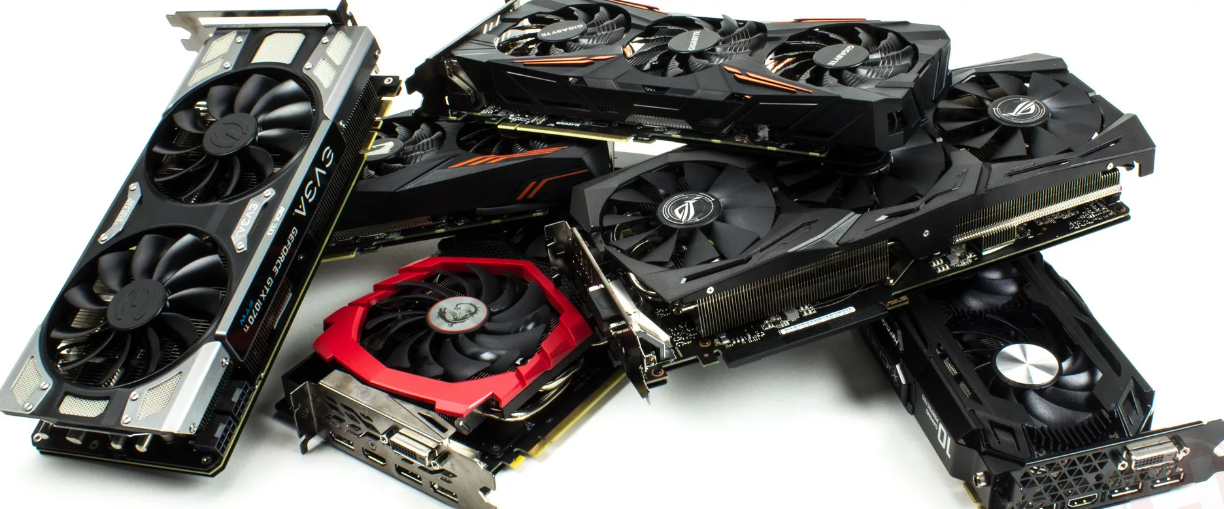Unganged dual что значит
memory testing 2096064k OK DDR 3 1024 unganged mode и п. ц
DIMM DDR 1024 на NForce3 — а
Добрый день. Есть ПК мать nforce3-a, в ней 2 планки ОЗУ DIMM DDR 252 мб 400мгц PC3200. Решил.
Совместимость Asus P5GPL-X SE, Intel Pentium 4 660, ATI Radeon HD 5570 1024 mb, 2 gb DDR 1
1.м/п — Asus P5GPL-X SE 2.проц.-Intel Pentium 4 660 3.видео-ATI Radeon HD 5570 1024 mb или Palit.
Стоит одна планка ddr 3200 на 512 kingmax. Хочу докупить еще 1024.
стоит одна планка ddr 3200 на 512 kingmax. Хочу докупить еще 1024. Проситал что в двухканальном.
MD Athlon 64, 1800 MHz, ECS RS480-M, 1024 Мб DDR, NVIDIA GeForce 7600 GS — зависает через некоторое время работы.
Тип ЦП AMD Athlon 64, 1800 MHz (9 x 200) 3000+ Системная плата ECS RS480-M (3 PCI, 1 PCI-E x16, 2.
Иногда подвисает компьютер при его включении на строчке «Memory Testing»
Драсте. Вобщем такая поблема. Иногда подвисает компьютер при его включении на строчке.
The Phenom / PhenomII memory controller: ganged vs unganged mode benchmarked
Written by Gionatan Danti on 17 June 2010 . Posted in Hardware analysis
User Rating: 



 / 100
/ 100
What AMD says about the ganged vs unganged question
AMD has some excellent documentations that can be download for free. Let’s examine some extract of the “BIOS and Kernel Developer’s Guide (BKDG) For AMD Family 10h Processors ”. On section 2.8 we can find some considerations on ganged vs unganged mode. If you are interested in checking the doc, I suggest you to especially read these sections:
- 2.8 — DRAM Controllers (DCTs)
- 2.8.5 — Ganged or Unganged Mode Considerations
- 2.8.8 — DRAM Data Burst Mapping
- 2.12.2 — DRAM Considerations for ECC
In short, the documentation indicates that:
In ganged mode, we have a 128 bit wide logical DIMM that map the first 64 bit on physical DDR channel A and the last 64 bit on DDR channel B. So we can state that a single 128 bit operation is effectively split between two memory channel; on the other hand, the DCTs can not operate independently. In other words, the physical address space is interleaved between the two DIMM in 64 bit steps
In unganged mode, each DCT can act independently and has its own 64 bit wide address space. In this mode the processor can be programmed to interleave the single, physical address space on the two normalized address space associated with the two memory channel; however, the finer possible interleaving unit is the cache line size (64 bytes)
AMD officially suggest to enable unganged mode to benefit from increased parallelism
Some CPU models (for example, the 8 and 12 core Magny Cours G34 processors), can only use the unganged mode.
I draw a graph that, hopefully, should help explaining the differences between ganged and unganged modes:

As you can see, in the ganged mode the physical address space is spread between the two memory channel with a 64 bit granularity: this means that two consecutive 64 bit access will read from two different memory channels and, more importantly, that a 128 bit access can utilize both channel.
On the other hand, in the unganged mode a (relatively) large portion of physical address space is bound to a single memory channel. In the graph above this portion is 64 bytes length, but the K10 processors can be programmed to use an even more coarse grained interleaving scheme. However, the normal interleaving unit in unganged mode is 64 byte length (as shown in the graph), as longer unit can cause a tangible performance loss.
From what we see, one should think that neither approach is the ideal one: the usual registers and operands size is 64 bit (8 byte), so it appear that both the ganged and unganged methods will read this 64 bit entity over only a single memory channel, effectively wasting bandwidth. A byte interleaved (or bit interleaved) mode should give as a great performance boost, right? Simply stated: no. The key point to understand here is that processors do not move in and out from memory data chunks of arbitrary length, but use a fixed-sized scheme: they move data from and to main memory only on a cache line base. On Phenom processor the cache line size is 64 byte long, so these processors move data from and to main memory only in 64 bytes chunks. This means that if we try to read a byte at address 0x0, the entire cache line (64 byte) will be fetched by the processor! While this can seems counterproductive, it has its reasons, especially related to space locality and cache design. It is beyond the scope of this article to explain why processors behave in this manner, but in short we can state that this design permit good performance boost (because exploit code and data space locality) and the creation of very dense caches.
As memory operations happens in 64 bytes chunks, it appear that ganged mode will always win: it can spread that 64 bytes operations on the two memory channel, while the unganged mode will only use a single memory channel. The reality, however, is the the unganged mode rarely suffer from this problem, because normally there are many outstanding memory request to be completed, so there are many outstanding cache line to be fetched from or stored to main memory. While the ganged mode will be faster in operating on a single cache line, the unganged mode can theoretically operate on two cache line at a given moment (with some restrictions). This parallelism can be realized because the memory controller incorporate an 8 entry depth memory controller queue (the “MCQ” box in the drawing above), for a total of 8 outstanding cache line requests.
However, simply stating that the unganged mode has the potential to be often on par with the ganged mode is not enough: in this case, we can simply use the ganged mode and forget about the unganged mode. The point is that the unganged mode has potential to be faster that ganged mode. Why? Because we must realize that main memory access don’t happen immediately, as the DRAM chip require many ns to be accessed: after this initial access time the data can be transferred quite quickly, but the initial access steps can be very slow (from a processor standpoint). Starting two memory operations at the same time, the memory controller has the possibility to hide at least partially the latency involved in the setup steps of the second operations. Obviously this is not always true, but it is a possibility indeed and, so, this can be an advantage of unganged vs ganged method. Moreover, using the unganged mode the memory controller can theoretically both write to and read from memory at the same time: this should help memory copy routines and multitasking operating system, where many processes can both read from and write to memory at the same time.
Summarizing the whole point, we can state that:
the ganged mode has the potential to be faster than unganged mode because it use a more fine grained interleave mode
the unganged mode has the potential to be faster than ganged mode because it can start two memory operations at the sime time, effectively hiding at least part of the latency involved in the second operation. Also, this mode permit to both read from and write to memory at the same time, with the intrinsic advantages that this possibility implies.
So, we don’t have a “magic setting” that will always give us the better possible performance. We should run some benchmarks to understand wich applications and scenarios benefits from one method rather than the other.

 Автор Тема: Заставить работать ОЗУ в Двухканальном режиме(Dual) на ноутбуке (Прочитано 34363 раз)
Автор Тема: Заставить работать ОЗУ в Двухканальном режиме(Dual) на ноутбуке (Прочитано 34363 раз)
0 Пользователей и 1 Гость смотрят эту тему.
Страница сгенерирована за 0.07 секунд. Запросов: 28.
unganged mode
Универсальный англо-русский словарь . Академик.ру . 2011 .
Смотреть что такое «unganged mode» в других словарях:
Multi-channel memory architecture — Multi channel architecture is a technology that increases the transfer speed of data between the RAM and the memory controller by adding more channels of communication between them. Theoretically this multiplies the data rate by exactly the… … Wikipedia
Разгон компьютеров — Разгон, оверклокинг (от англ. overclocking) повышение быстродействия компонентов компьютера за счёт эксплуатации их в форсированных (нештатных) режимах работы. Содержание 1 Критерии штатного режима работы компьютера … Википедия
Unganged dual что значит
Мой косяк признаю, количество чипов не зависит от битности одного чипа, а зависит от обьема всей памяти, но даю зуб, что битность чипов разная, вот и не фурычит
Редактировать | Профиль | Сообщение | Цитировать | Сообщить модератору Здраствуйте, вот добавил планку памяти на ноутбук Toshiba L20, было 256 теперь 512,
немогу понять работает ли память в «Дуал ченел».
Оно как то себя должно проявить?
(целерон1,7, DDR2, ATI rx-200)
Как включить двухканальный режим.
Чипсет и проц поддерживают двуканал.
спасибо, прочитал все
у меня также эвверест ничего вразумительного не показывает (вкладка чипсет пустая)
в биосе тоже ничего нет
Так какже все таки определить есть дуал ченел или нет. Помогите.
«системная плата=чипсет=северный мост=контроллер памяти=активный режим».
я же говорю! «эвверест ничего вразумительного не показывает (вкладка чипсет пустая)»
один чип хюних другой самсунг, по спд параметры одинаковые, визуально тоже выглядят одинаково
Так какже все таки определить есть дуал ченел или нет. Помогите.
![]()
У тя версия эвереста какая?
Поставь эту-everestultimate400.
Мобыть твой эверест устаревший и не понимает часть внутренностей ноута. ИМХО.
 Автор Тема: Заставить работать ОЗУ в Двухканальном режиме(Dual) на ноутбуке (Прочитано 34363 раз)
Автор Тема: Заставить работать ОЗУ в Двухканальном режиме(Dual) на ноутбуке (Прочитано 34363 раз)




